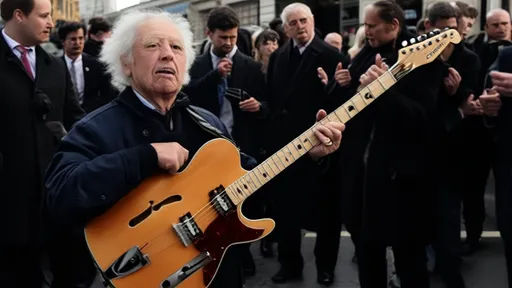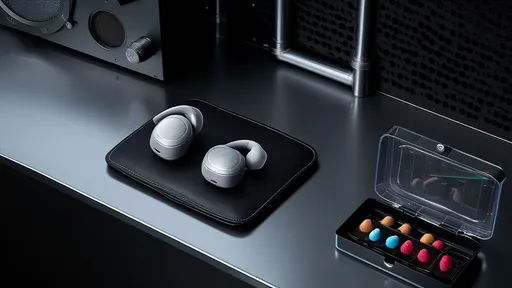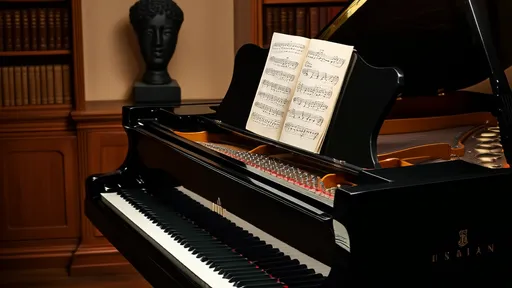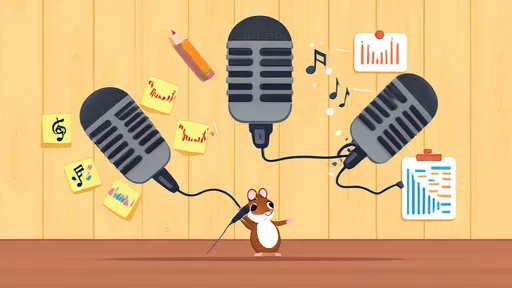Mastering a musical instrument is a journey that requires dedication, patience, and most importantly, consistent practice. While natural talent plays a role, the quality and quantity of practice time ultimately determine how quickly a musician progresses. However, the ideal practice duration varies significantly depending on the instrument, the player's skill level, and their musical goals.
The foundation of effective practice lies not in marathon sessions that lead to burnout, but rather in focused, regular engagement with the instrument. For beginners across all instruments, the initial focus should be on building daily habits rather than pushing for extended periods. Short but frequent practice sessions allow the body to develop muscle memory without strain, while giving the mind time to absorb new concepts between sessions.
When considering string instruments like violin or guitar, the physical demands require careful attention to practice duration. Novice string players often experience finger soreness and muscle fatigue as they develop calluses and strengthen unfamiliar hand positions. For children starting violin, even 15-20 minutes of daily practice can yield progress, while adult beginners might benefit from 30-45 minute sessions. Intermediate players typically practice 45-90 minutes daily, dividing time between scales, études, and repertoire. Advanced violinists and professionals often practice 3-4 hours daily, but this is typically broken into segments with breaks to prevent injury.
Piano practice follows different considerations due to the instrument's polyphonic nature and the involvement of both hands independently. Beginners might start with 20-30 minute sessions focusing on hand position and basic coordination. As skills develop, piano students benefit from longer sessions of 45-60 minutes to work on multiple aspects simultaneously - technique, sight-reading, and repertoire. Serious piano students preparing for competitions or auditions often practice 3-5 hours daily, but this intensive schedule requires careful structuring to avoid repetitive stress injuries.
The wind and brass family presents unique challenges regarding practice duration due to the physical nature of sound production. Developing proper embouchure (mouth position) and breath control requires frequent but shorter sessions, especially for beginners. Young trumpet or clarinet players might practice in 15-minute increments with rests, totaling 30-45 minutes daily. As endurance builds, intermediate woodwind and brass players can extend sessions to 60-90 minutes. Professional wind players often practice in multiple 30-45 minute blocks throughout the day, allowing facial muscles to recover between sessions.
Percussion instruments encompass a wide range from delicate xylophone work to powerful drum set playing, each with different practice requirements. Rudimentary snare drum practice might begin with 20-minute sessions focusing on grip and stroke technique. Drum set players often benefit from dividing practice time between technical exercises and playing along with music, totaling 45-90 minutes for intermediate players. Unlike other instruments, percussionists can practice many techniques (like rudiments) on practice pads away from their primary instrument, allowing for more frequent short sessions throughout the day.
The human factor in musical practice cannot be overstated. Age and physical development significantly impact optimal practice duration. Young children have shorter attention spans and developing muscles, making multiple 10-15 minute sessions more effective than single long practices. Teenagers can handle longer sessions of 45-90 minutes, while adults often balance practice with other responsibilities, making focused 30-60 minute sessions most practical. Elderly beginners or returning musicians might adjust practice length to accommodate physical limitations while still making steady progress.
Practice quality consistently proves more important than sheer quantity. A 30-minute session with clear goals, focused attention, and proper technique yields better results than two hours of distracted repetition. Smart practice involves identifying weaknesses, breaking problems into manageable parts, and using varied approaches to reinforce learning. Recording practice sessions for later review can dramatically increase the effectiveness of time spent with the instrument.
Seasoned music educators emphasize that regularity trumps duration. Practicing 30 minutes six days per week produces better results than a single 3-hour weekly session. This consistency allows for continuous reinforcement of skills and concepts. Many professionals recommend establishing a fixed daily practice time to build the habit, whether it's morning scales or evening repertoire work.
As musicians advance, their practice time naturally divides into different focus areas. A balanced session might include warm-ups/exercises (20%), technical work (30%), repertoire (40%), and sight-reading or improvisation (10%). This structure prevents overemphasis on any single skill while promoting well-rounded development. The percentage allocation shifts based on immediate goals - preparing for an audition would increase repertoire time, while addressing technical limitations might temporarily emphasize exercises.
Physical and mental fatigue serve as important indicators that practice time should conclude. When concentration wanes or mistakes increase due to tiredness, continuing practice often reinforces errors rather than skills. Learning to recognize these signals helps musicians maximize their effective practice time. Brief pauses during longer sessions (5 minutes every 25-30 minutes) can maintain focus and prevent strain.
The digital age has introduced both challenges and solutions for practice duration. Online metronomes, tuners, and backing tracks help optimize practice time, while apps can track progress and schedule sessions. However, the distraction potential of devices requires discipline to ensure technology enhances rather than interrupts focused practice. Some musicians use the Pomodoro technique (25 minutes practice, 5 minutes rest) to maintain concentration during sessions.
Seasonal adjustments to practice duration often prove beneficial. Summer breaks or holiday periods might allow for more intensive practice blocks, while busy academic or work periods might require shortened but consistent sessions. The key is maintaining some regular contact with the instrument rather than taking extended breaks that lead to skill regression.
Listening constitutes an often-overlooked but essential component of musical development that supplements physical practice time. Score study, recording analysis, and live concert attendance all contribute to musical growth without requiring instrument time. Many teachers recommend that at least 20% of a musician's "practice" time should involve active listening to expand their artistic conception.
Ultimately, the ideal practice duration balances ambition with sustainability. While famous virtuosos' practice regimens (6-8 hours daily) might seem aspirational, such intensive schedules aren't practical or necessary for most musicians. Steady, mindful practice tailored to individual circumstances yields continuous improvement without burnout. The most effective practice schedule is one that can be maintained consistently over years, allowing the joy of music-making to flourish alongside technical development.

By /Aug 5, 2025

By /Aug 5, 2025

By /Aug 5, 2025

By /Aug 5, 2025

By /Aug 5, 2025

By /Aug 5, 2025

By /Aug 5, 2025

By /Aug 5, 2025

By /Aug 5, 2025

By /Aug 5, 2025

By /Aug 5, 2025

By /Aug 5, 2025

By /Aug 5, 2025

By /Aug 5, 2025

By /Aug 5, 2025

By /Aug 5, 2025

By /Aug 5, 2025

By /Aug 5, 2025

By /Aug 5, 2025

By /Aug 5, 2025